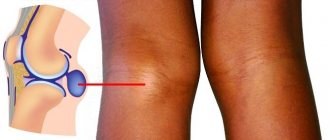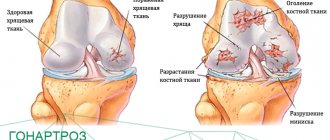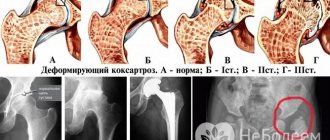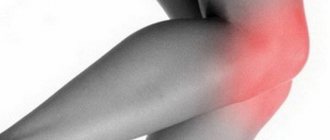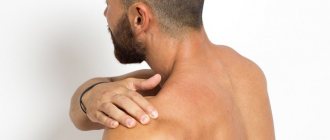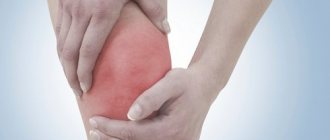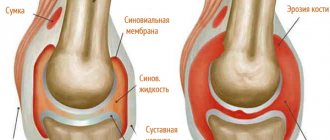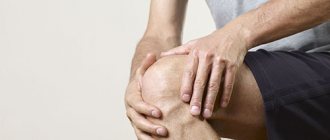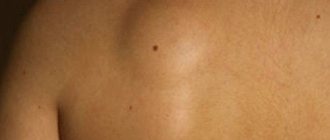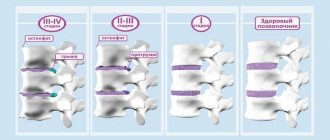A pathology such as synovitis of the knee joint mainly affects elderly people. The disease is characterized by an inflammatory process that affects the synovium of the joint and is accompanied by the accumulation of effusion fluid. If the pathology is not treated for a long time, this can lead to the accumulation of purulent exudate, which provokes a number of complications.
Description
Synovitis of the knee joint and other joints is a disease based on dysfunction of the synovial membrane as a result of inflammation. The inner surface of the joint capsule is covered with connective tissue, the surface of which has villi. The membrane cells synthesize synovium (synovial fluid), which improves the gliding of articular surfaces during movement and delivers oxygen and nutrients to the articular tissues.
For normal functioning, the joint contains 2-3 ml of joint secretion. As synovitis develops, the knee becomes completely filled with fluid. This is due not only to increased production, but also to the loss of the ability to reabsorb excess effusion. In this case, the composition and consistency of the synovium changes. It becomes viscous and can acquire a different composition, the nature of which depends on the cause of the disease.
Prognosis and possible complications
The prognosis depends on what caused the effusion synovitis and how quickly treatment was started. If it is not expressed, then the therapy is short-term, it is possible to restore the mobility of the knee joint in a short time and return to the usual way of life.
When it enters the chronic stage, it is quite difficult to get rid of the disease. The likelihood of complications and surgical intervention is high.
Treatment of knee synovitis must be timely, since it significantly complicates the course of the underlying disease, and, accordingly, the patient’s quality of life.
The greatest likelihood of complications is with the infectious and often recurrent non-infectious form. The following consequences may occur:
- scarring, thickening, sclerosis;
- dislocations, subluxations;
- soft tissue phlegmon;
- formation of hypertrophied areas;
- purulent arthritis;
- periarthritis;
- hydrarthrosis (hydrosis of the joint);
- penarthritis (acute purulent inflammation);
- sepsis.
All intra-articular changes lead to dysfunction of the joint and are resolved surgically.
Pathogenesis
Synovitis of the knee joint is most often a secondary pathology, which is a complication of damage to articular cells. The mechanism of development of the disease is the damage to synovial cells by active inflammatory enzymes, which are secreted by the lysosomes of dead cells. As a result, metabolic reactions change over the necrotic area. The synthesis of large amounts of fluid can be attributed to the body's compensatory response to the inflammatory response.
Depending on the etiological factor, the exudate has a different composition. This may be a serous translucent fluid or purulent effusion. The latter is a product of the vital activity of microorganisms. The pathogenic secretion may also contain fibrinogen, which as a result of a biochemical reaction is converted into fibrin strands. Gradually, foreign components grow into connective tissue and form scars, which over time leads to contracture (restriction of joint mobility).
How to treat using folk remedies?
The use of folk remedies for synovitis of the knee joint is permitted after the approval of your doctor.
List of recipes:
- Bay leaf is a powerful antiseptic, has anti-inflammatory, antimicrobial, analgesic properties, and is capable of removing waste substances from the body. Taken externally as baths, rubdowns, and internally as decoctions and infusions.
- Homemade spice oil 2 tbsp. crushed bay leaf, pour a glass of oil (vegetable, olive, corn, palm) and leave in a dark place for 7 days. Use only as a rubbing, combined with massage of the sore spot.
- Boil a decoction of 10 g bay leaves for 5 minutes. in 300 ml of water. Remove the pan from the heat, cover well with a blanket and leave to steep for 3 hours. Strain the resulting decoction and drink completely before bed. The product must be prepared daily, as the healing properties disappear the next day. Course of treatment: 3 days, 7 days – break, 3 days again taking the decoction. It is recommended to repeat it after a year.
- Garlic infusion. Take 100 g lemon, 200 g garlic, one celery root. All components are finely ground, mixed in a container, pour 3 liters of boiled water, and leave for 3 hours. You need to take the medicine 60 ml three times a day. The course of treatment is 30 days.
- Cabbage leaf compress. We apply a cabbage leaf to the swollen knee and secure it with a bandage, wrapping it in a woolen knee pad. We keep it night and day. The next night we replace the sheet with a fresh one. It is more effective to mash the leaf a little so that the juice appears. It relieves pain and swelling well.
- You can make salted ice at home. A very popular remedy. For this method you need to dissolve 4 tbsp in 1 liter of water. l. table salt. Pour the solution into ice cube trays and place in the freezer for sufficient time to freeze. The resulting ice cubes are applied to the painful area, when the ice melts, you need to wrap your knee in a woolen cloth and wait 4 hours. Perform this procedure daily until the condition improves.
- Ointment made from dead wood, propolis and beeswax for synovitis. To prepare the ointment, take half a glass of any vegetable oil and add to it the same amount - 1 teaspoon each - of crushed dead bees, grated propolis and beeswax. Mix everything with oil and place in a water bath. Heat for 30 minutes, stirring. After cooling, apply with gentle movements to the swollen knee, massage a little and tie with canvas. It's better to do it at night.
Classification
In orthopedic practice, there are several types of synovitis of the knee joint, differing in causes, duration, and morphological characteristics.
Considering the period of time during which the disease accompanies the patient:
- Acute – up to 21 days;
- chronic – more than 1 month.
According to the composition of the fluid that accumulates in the joint:
- Serous - with a transparent exudate, which subsequently acquires a yellowish tint. Appears without the influence of an infectious factor.
- Fibrinous - a dense secretion with a large amount of fibrinogen. Most often appears with viral and fungal infections.
- Purulent - green exudate with a foul odor, signals the penetration of pyogenic bacteria into the joint cavity.
- Mixed – combined forms occur: serous-fibrinous, purulent-fibrinous.
- Hemorrhagic - with a large number of red blood cells, which color the synovium pink.
According to the etiological origin, there is the following division:
- Aseptic - without the presence of pathogenic bacteria.
- Infectious – caused by microbes.
- Post-traumatic – develops as a result of joint injury.
- Autoimmune – when immune aggression occurs and is directed against one’s own cells.
- Metabolic – when metabolic reactions are disrupted.
In addition, the disease can be primary, the cause of which cannot be determined. This type is called idiopathic. Another type is a consequence of damage to articular tissues or a pathological process - secondary synovitis of the knee joint.
Clinical picture
Typically, symptoms of synovitis of the knee joint appear 3 days after infection in this area or injury. The main signs of the anomaly include the following:
- Drawing pain;
- Violation of the shape of the joint;
- Impaired motor activity;
- Joint enlargement;
- Redness of the skin in the affected area.
The intensity of the manifestations of the disease depends on many factors. Often, signs of synovitis of the knee joint are aggravated by general weakness, increased temperature, and dysfunction of various organs.
Symptoms of the pathology depend on the characteristics of the inflammatory process. Acute synovitis develops over several hours or days. If a person has an infectious inflammation, the following symptoms occur:
- Significant increase in the joint area;
- The appearance of a red and hot swelling;
- Pain when bending the leg;
- The appearance of lameness when moving;
- Deterioration of general condition – weakness, muscle pain, nausea, increased temperature.
The pathology develops quite quickly. Joint swelling and discomfort usually occur over several hours. Maximum discomfort and pain accompany purulent infection.
With the traumatic nature of the disease, symptoms also appear quite quickly. In this case, progressive swelling, pain on palpation, and decreased motor activity in the knee predominate. A person’s general health deteriorates.
Causes
Synovitis of the knee joint in children and adults can be of various origins. The development of an inflammatory reaction in the joint is facilitated by various types of knee injuries:
- Bruised injury;
- dislocation;
- sprained or torn ligaments;
- meniscus damage;
- crack or fracture.
In addition to mechanical damage due to external force or as a result of a fall, the cause of synovitis of the knee joint, according to reviews, is often micro-tears of fibers after heavy physical activity or frequently repeated movements with tension.
Pathological prerequisites include:
- Arthrosis is a destructive disease of cartilage and bone tissue;
- arthritis - inflammation in a joint;
- Baker's cyst is a hernial protrusion filled with inflammatory synovial fluid;
- oncological neoplasms;
- bursitis is an inflammatory reaction in the cavity of the synovial bursa (bursa), located on the side of the joint, on its front part or under the patella;
- rheumatoid arthritis - appears due to autoimmune disorders;
- viral diseases;
- specific infections – tuberculosis, brucellosis, gonorrhea;
- fungal infections.
In addition to direct causes, there are predisposing factors that can provoke synovitis of the left or right knee joint:
- Increased body weight;
- endocrine disorders;
- hormonal disbalance;
- unbalanced diet;
- metabolic disease;
- sedentary lifestyle;
- prolonged physical inactivity;
- bad habits - smoking or drinking alcohol.
Frequent visits to the doctor with suspected synovitis of the right or left knee joint have been recorded in older people. This is due to degenerative-dystrophic changes that occur as a result of natural involutive processes.
What is the prognosis for recovery?
Patients in 80% of cases note significant relief after therapy for both acute and chronic synovitis. It is worth considering that only a timely visit by the patient to a doctor will give positive results.
In cases of infectious synovitis, there is a danger to the patient’s life, since the accumulation of pus can spread to other areas of the limb, and blood poisoning is possible, so treatment should begin immediately.
In the chronic form of synovitis, it is possible to achieve remission for a long period.
Symptoms
When synovitis of the knee joint appears, the symptoms vary in severity and variety. Any form of the disease is accompanied by signs characteristic of inflammation. The clinical picture of each type has a number of distinctive symptoms.
Synovitis of the knee joint in children and adults is accompanied by the following manifestations:
- A pain symptom occurs in response to irritation of receptors and the pressure of a large amount of fluid on surrounding tissues. In serous forms, the pain syndrome is of a moderate aching nature, purulent synovitis leads to severe throbbing pain.
- Edema is the result of the accumulation of excess fluid in the soft periarticular tissues. In mild forms of inflammation, the knee swells slightly; in severe cases, severe swelling develops.
- A local increase in body temperature over the joint is a characteristic symptom of inflammation. The hotter the joint is to the touch, the more actively the pathological reaction develops.
- Hyperemia indicates internal disorders in the joint. The skin may change color and become pale pink, and in some cases, dark purple.
- Deformation of the knee joint manifests itself in an increase in the articulation and its acquisition of a ball shape. This phenomenon is explained by the filling of the cavity of the joint capsule with liquid, which creates pressure on the walls of the capsule and stretches them, smoothing the edges.
The general condition, as a rule, does not change. An increase in body temperature to subfebrile levels may accompany fibrinous synovitis. When a secondary infection occurs or pyogenic bacteria enter the cavity of the bursa, the clinical picture of the disease changes:
- The pain intensifies and becomes pulsating;
- the knee becomes very swollen and hot;
- mild hyperemia gives way to severe redness;
- symptoms of general intoxication are observed - fever, headache, weakness;
- movements in the knee joint are severely limited, extension of the joint is almost impossible.
Synovitis of the knee joint: symptoms and how to treat
The knee joint is one of the most complex bone joints in terms of structure:
- it is formed by one bone (tibia) - from below, one (femur) - from above;
- the third bone, the patella, is located in front and is also involved in the movements of the joint;
- only inside this joint there are two cartilaginous half-rings - meniscus, which play the role of a shock absorber of this joint;
- there are many ligaments in the joint, the task of which is to ensure its strength and functionality;
- the joint is covered from above by a “muff” - a joint capsule. On the outside it consists of coarse fibrous tissue, and on the inside it is penetrated by a large number of vessels, performing the function of feeding the articulating surfaces.
Since this particular joint contains a large number of structures - bones, cartilage, ligaments and muscles - the synovial membrane (that is the name of the inside of the joint capsule) forms a large number of depressions that wrap around some of them.
Subscribe to our INSTAGRAM account!
These are called bursae and folds. When a joint becomes inflamed, inflammatory fluid may accumulate in them. It also appears there when there is a disease of this membrane itself, and this can occur both as an independent disease and as a general reaction of the body. Here we come close to the concept of “synovitis”.
This is a pathology in which, as a result of various reasons, inflammation of the synovial membrane of the joint occurs. As a result, an inflammatory fluid is formed in it - exudate (effusion).
Signs and symptoms
A disease that has developed acutely and is not purulent is manifested by the following symptoms:
- an increase in the volume of the joint, which occurs within a few hours to a day;
- there is no high temperature of the skin over the joint;
- symptom of the patella running: if you press on it, it sinks into the joint, when released, it floats up;
- movements in the joint are difficult and painful;
- body temperature rises (not a mandatory sign);
- weakness and malaise appear.
Acute purulent synovitis:
- The joint increases in volume;
- The skin over the joint turns red and becomes hot to the touch;
- Bending and unbending the leg is very painful, sometimes even impossible;
- Body temperature rises, usually to high levels;
- The general condition suffers: weakness, nausea, fatigue;
- There may even be confusion, delirium, hallucinosis.
Chronic synovitis occurs with mild symptoms:
- fatigue when walking
- restriction of movement in a joint
- aching pain in the knee
- rapid general fatigue
- with a long-term process, you can notice a crunching sound,
- frequent dislocation of the knee even with a slight increase in the range of motion in it.
Acute disease (especially purulent synovitis) is most often unilateral. But if it develops in response to another pathology (reactive, allergic synovitis), and not to injury, synovitis of the right and left knee joint is possible. Then the above symptoms will occur in two knees, against the background of another disease or immediately after it has passed.
Possible complications
If adequate treatment for synovitis of the knee joint is not carried out or unsuccessful attempts at self-therapy are made, secondary conditions develop that can cause significant damage to health:
- Deforming arthrosis (gonarthrosis) – secondary degeneration of the cartilage and bone tissue of the joint;
- sepsis is a general blood infection that develops when microorganisms enter the vascular bed;
- contracture – restriction of joint mobility due to shortening of the knee ligaments;
- ankylosis – immobility of the knee joint.
In addition, some patients experience shortening of the limb, due to which the gait changes and lameness appears. Therefore, in order to prevent irreversible phenomena, it is necessary to properly treat synovitis of the knee joint.
Forms of pathology
At the initial stages of development, minimal synovitis of the knee joint is observed. It has an unexpressed nature and can be quickly treated. Under the influence of injury or any inflammatory disease, moderate synovitis of the knee joint develops. It is characterized by pronounced symptoms and can affect the joints of both lower extremities.
According to the type of course of the disease, acute (reactive) and chronic synovitis are distinguished. In acute synovitis, not only the structure of the synovial fluid of the knee joint is affected, but also the area of the thigh and ankle, due to the action of mechanical and toxic irritants. In the initial stages, moderate synovitis of the knee joint can be cured completely and there is no fear of relapses. Advanced pathology against the background of concomitant ailments (sinusitis, hemophilia, arthrosis, arthritis) takes on a chronic form.
The following subtypes of pathology are distinguished:
- Villous synovitis or nodular villous synovitis. Accompanied by a benign tumor formation.
- Suprapatellar synovitis. It affects the lining of the joint, which is located above the patella.
- Exudative synovitis. A recurrent disease that affects the large joints of both limbs.
Diagnostics
The diagnosis of “synovitis of the knee joint” is made by an orthopedist or surgeon with the participation of specialists of a narrow specialization if concomitant pathologies are suspected. What it is is clarified by clinical symptoms, examination results and hardware diagnostics. During the interview, the doctor finds out the nature and duration of symptoms, possible injuries, type of activity and lifestyle.
During a physical examination, the etiology of the disease is assumed, tests are performed to determine the preserved range of motion and the presence of fluid in the joint capsule. In addition to significant enlargement of the knee, fluctuation (accumulation of effusion) is determined by pressing with the fingers of one hand on opposite sides of the enlarged joint. If a “push” is felt, then the fluctuation is positive.
What is synovitis and how to treat it is determined after objective research methods:
- X-ray – prescribed to determine bone changes;
- magnetic resonance imaging - to assess the condition of soft tissues;
- arthroscopy – is carried out to examine the inner surface of the joint using a medical device with a microscopic camera, the image from which is displayed on the monitor;
- diagnostic puncture – to collect joint exudate for bacteriological examination to determine the type of pathogen.
Based on the results obtained, an accurate diagnosis and its etiological origin are determined in order to correctly select therapeutic tactics and cure synovitis of the knee joint.
Consequences of synovitis of the knee joint
The addition of a bacterial infection significantly complicates the disease.
In the initial stages, synovitis is treated quickly and goes away without complications. If timely therapy is not started, a purulent form of the disease may develop, which is accompanied by a severe clinical picture and often becomes a cause of disability. Aggressively develops against the background of previous injuries or pathologies that affect the knee. Complications caused by purulent synovitis can lead to blood poisoning.
Treatment
To prevent relapses, the disease of inflammatory origin requires complex treatment. In order to cure synovitis of the knee joint, drug therapy, rest and physiotherapy are prescribed. It is possible to achieve complete elimination of the pathological process with the help of therapeutic puncture, which is carried out among the first therapeutic procedures.
Puncture
Puncture of the joint for the purpose of pumping out exudate is prescribed as the most effective method of treating synovitis of the knee joint. The minimally invasive procedure takes place under local anesthesia. Moreover, puncture in this case also serves as a diagnostic procedure. A special needle, through which exudate is evacuated, is inserted into the joint cavity. A sterile syringe is connected to the needle, and the first portion is sent for laboratory examination.
Next, all the liquid is pumped out, and the cavity is washed with an antiseptic solution. After this, antibiotics are used for synovitis of the knee joint, which are injected into the joint capsule. Most often, a positive effect occurs after the first procedure. If the joint refills with effusion, the manipulation is repeated again.
Medicines
When prescribing pharmacological drugs, symptoms are taken into account, and treatment is designed to alleviate the patient’s condition:
- Non-steroidal anti-inflammatory drugs , as an analgesic and anti-inflammatory agent - Indomethacin, Diclofenac;
- antibiotics for synovitis of the knee joint to destroy the pathogen - Erythromycin, Ampicillin;
- diuretics for severe edema - Furosemide, Diuver;
- in the absence of an analgesic effect from NSAIDs , glucocorticosteroids are prescribed - Dexamethasone, Prednisolone ;
- chondroprotectors to stop reactions that destroy the joint - Dona, Structum .
Physiotherapy
When the acute period of synovitis of the knee joint passes, restorative treatment is carried out, which, according to reviews, promotes a speedy recovery.
The following methods are effective for synovitis:
- Magnetotherapy;
- electrophoresis;
- UHF;
- laser therapy;
- ultrasonic influence.
Each method is carried out in courses, during which blood microcirculation, tissue nutrition, and regeneration of damaged areas improve.
Orthopedic mode
In the first days of the onset of the disease, it is recommended to observe bed rest, how to treat is determined according to the symptoms, and treatment is carried out by limiting the load on the diseased joint. If independent movement is necessary, a rigid fixation orthosis is put on the affected joint. The knee pad securely holds the joint and relieves stress during movement. If a person is lying down, he does not need a knee brace.
In addition to an orthopedic device, crutches or a walker are used for movement. Loads for synovitis of the knee joint should be absent during the treatment period; with thoughtless physical activity, the therapeutic actions taken can be reduced to zero, which is confirmed by reviews.
Operation
If synovitis becomes chronic, and the pain cannot be relieved conservatively, surgical treatment is performed:
- Arthroscopy – cleansing and treatment using a minimally invasive procedure under the visual guidance of a micro-camera. Through 3 small punctures, the arthroscope and surgical instruments are inserted. During the operation, exudate is evacuated, and parts of the joint capsule are removed.
- Synovectomy - resection of the damaged area of the synovial membrane is performed, after which antibiotics are prescribed for synovitis of the knee joint, both for systemic exposure and for intra-articular procedures.
Symptoms
The clinical picture of synovitis depends on the severity of the inflammatory process, as well as the form of the course. The initial stage is manifested by moderate symptoms, pain appears after exercise, redness and swelling are mild. Damage to the right joint occurs more often than the left, since for most this is the pushing leg.
In the acute version, symptoms appear quickly and progress sharply. The patient complains of pain in the knee area, which appears at rest, but increases significantly when trying to flex and extend the joint.
A swelling forms in the affected area due to significant fluid production and the exudative process. Movement in the joint is limited and, as it progresses, becomes impossible due to pain. If infectious pathogens are attached, fever and symptoms of general intoxication appear. The diagnosis is confirmed using the following studies:
- X-ray;
- Ultrasound;
- MRI;
- CT;
- puncture.
Synovitis of the knee joint
The knees are the largest joints in the human body, they provide the most important function, helping a person move.
But at the same time, the knee joints undergo constant loads; throughout the day they bear the weight of the entire human body. The structure of the knee is quite complex, and any part of it can be injured and painful. And if at least one link fails, the entire joint suffers and gradually collapses and ceases to perform its function. Therefore, it is very important to seek help from a specialist for any knee pain.
Alternative medicine methods
How to treat synovitis of the knee joint with folk remedies? Getting rid of the disease must begin immediately. In such cases, every day is precious, because the disease develops, which in the future will lead to irreversible consequences, complete dystrophy of the knee joint with the impossibility of full movement.
Synovitis of the knee joint can be cured only if treatment is started in a timely manner and complex therapy is used. There must be an examination by the treating doctor, and his recommendations are also important. Below are traditional methods of treatment.
Bay leaf for illness
Buy a package of bay leaves in the store. At home, pour half the package with 300 ml of hot water in a saucepan. Let it simmer over low heat for about 5 minutes, remove from heat and leave for 3 hours, filter with a gauze cloth. This infusion is taken right before bed. They drink the drink 3 evenings in a row, preparing a new one each time.
Read also: Cracking in the knees
After a week's break, the course must be repeated.
Onion and rye recipes
For the first option, take 2 large onions and remove the husks from them. Wash well and chop the husk into small pieces. Place both the onions and peels in a bowl and add 1 liter of hot water, boil over medium heat until the onions soften. Then the drink is filtered and taken three times a day, a glass before eating. The course of treatment is a week.
Rye decoction is a very effective remedy for combating synovitis of the knee joint. Place a container with 1 liter of water on the stove and heat it up. Rye is poured into a glass, about half the capacity. Pour the raw materials into boiling water. Boil for about a quarter of an hour, cool and filter through a piece of gauze. Add 0.5 kg of honey, 250 ml of vodka, chopped barberry roots - 2 tsp to the resulting liquid. All components are mixed well and left to infuse for 21 days, protected from light. The medicine is taken in 3 tbsp. l. three times a day 30 minutes before meals.
Herbal effects
One of the best remedies for the treatment of any joint diseases. Dried birch and nettle leaves, willow bark and calendula flowers are taken in equal parts. All raw materials are crushed and mixed. Pour 1 tbsp into the container. l. of this mixture and pour 400 ml of hot water. Insist throughout the night. Filter through a strainer. Take 100 ml 4 times a day.
What are some other effective folk remedies?
Signs of the disease can be eliminated thanks to a special herbal mixture. You will need tansy, mistletoe, and birch leaves. You need to add walnut leaves to them. All ingredients will need to be used in equal proportions.
All components must be thoroughly crushed. A spoonful of herbal mixture is poured with boiling water. Then you need to wait an hour for the product to infuse. After straining, the drink should be drunk all day in small doses, but often.
Black Walnut
This remedy has strong anthelmintic properties. In addition, it helps cleanse the blood and remove not only parasites, but also dangerous bacteria from the human body. The tincture can be taken every day. The dosage for 1 dose is a teaspoon. It is recommended to use the product before meals.
Honey and lemon
One of the reasons why the disease can develop is a weakened human immune system. To strengthen it, you can drink a product based on honey and lemon. It is very simple to prepare. Squeeze lemon juice into a glass of water, and then add a spoonful of honey.
It is recommended to drink this remedy once a day - in the morning on an empty stomach. It will not only strengthen a person’s immune defense, but also help the body cleanse itself. In addition, a bandage can be moistened in such a liquid and applied to a sore spot. This lotion will speed up the recovery process of the joint.
Bay oil
You will need 2 tablespoons of carefully chopped fresh bay leaf. The raw material is filled with a glass of sunflower oil. It is best to use olive oil. The ingredients are thoroughly mixed. The container must be closed. The product will be infused for a week. After this, the substance will be ready.
You need to rub the oil on sore areas before going to bed. This procedure can also be done during the day.
It is interesting to read on the topic - the benefits and harms of bay leaves.
Four main symptoms
redness of the skin (hyperemia),
restriction in movement.
The symptoms of synovitis of the knee together form a syndrome characteristic of many diseases and injuries of the knee (arthritis, arthrosis, dislocation and others). Therefore, before prescribing treatment, the attending physician must carefully conduct a differential diagnosis (differential - that is, establish an accurate diagnosis, excluding other possible diseases).
Consequences and prognosis
If synovitis is treated untimely and incompetently, the consequences can be dire. For example, it will develop: periarthritis, gonarthrosis, osteoarthritis, phlegmon, purulent panarthritis or arthritis. Pus penetrates the joint capsule, bone rotting and sepsis begin. All this ultimately ends in disability and even death of the patient.
The prognosis in case of treatment of synovitis and compliance with all doctor’s instructions is quite favorable. Joint mobility is restored and relapses are extremely rare.
Types of synovitis
In medical practice, synovitis is classified depending on the cause of the disease.
The following types of synovitis of the knee joint are distinguished:
- Primary – synovitis, which is a manifestation of the underlying disease. This could be arthrosis, arthritis, etc.
- Secondary - manifests itself as a reaction to some pathology. The primary disease may be allergies, infectious and viral diseases, damage to ligaments or menisci. To eliminate this form of synovitis, it is enough to eliminate the root cause of the disease.
- The post-traumatic type is the most common synovitis; it occurs due to damage or trauma to the knee joint - a bruise or blow to the kneecap. Such an injury triggers the process of accelerated synthesis of synovial (intra-articular) fluid
Any of these types of synovitis is included in one of two large groups, according to which the method of treating inflammation is determined:
- Aseptic - develops without the participation of microorganisms - against the background of endocrine, autoimmune, rheumatic, post-traumatic diseases.
- Infectious synovitis - it is caused by bacteria, protozoan fungi, and viruses. Often the cause of the infectious form is Escherichia coli, pneumococci, Brucella, and tuberculosis. Pathogenic microflora enters the joint through the bloodstream and forms a focus of inflammation.
- Allergic – synovitis, which is a reaction to contact with allergens.
Determining all these groups and types allows you to prescribe the most competent treatment, which will be effective for a certain type of synovitis.
The course of the disease can be acute, subacute and chronic.
Prevention of moderate synovitis
It is possible to prevent the development of moderate synovitis; to do this, you must follow the following recommendations:
- promptly treat any joint injuries;
- do exercises for the whole body every day;
- eat right, prevent the development of obesity;
- timely treat infectious diseases, including those of the oral cavity;
- treat all chronic pathologies, including the endocrine and immune systems;
- try to avoid overexertion, especially in children.
A healthy lifestyle and a responsible attitude towards your body will help to avoid synovitis and other serious pathologies that are life-threatening for the patient.
Causes of synovitis
Normally, the amount of synovial effusion should be at the level of 2 ml. The reason for increasing the formation of this content may be:
- trauma with damage to the joint capsule;
- rheumatoid consequences;
- infection (sepsis);
- tumors;
- diseases of the endocrine system;
- infectious severe lesions (syphilis, Koch's disease);
- intestinal or urological infections;
- arthrosis
Analysis of the effusion will show what reason led to the inflammatory process.
Consequences
The consequences of moderate or severe synovitis depend on the cause of inflammation of the synovial membrane, the timeliness of the diagnosis, the adequacy of the prescribed treatment and the patient’s compliance with all medical recommendations.
Different types of pathology can have different consequences. As a rule, serous and allergic forms of synovitis end successfully and do not have any negative consequences for the function of the joint. But purulent forms pose a threat not only to the knee, but also to a person’s life, as they can be complicated by the development of sepsis and shock.
If the disease becomes chronic, it can cause the development of secondary arthrosis, chronic instability of the joint, its subluxations and dislocations.
Therefore, synovitis must be taken seriously, even in cases where the disease is not accompanied by pain and severe swelling of the knee. This will help avoid serious consequences in the future.
Synovitis - what is it?
Synovitis of the knee joint is a process of inflammation of the synovial membrane of the joint, which is accompanied by an increase in the production of synovial fluid. Inflammation can be different in its causes, course, complications and modes of progression.
Sometimes synovitis comes without a trace, but in some cases long-term treatment, surgery and subsequent rehabilitation are required.
Classification and forms of synovitis
Like any disease, synovitis can be classified from various points of view. The simplest classification is etiological, which considers the causes of the disease.
First of all, synovitis can be both infectious and aseptic in nature. In infectious synovitis of the knee joint, the causative agents can be many microorganisms, for example, Brucella (the causative agent of brucellosis), Yersinia, or tuberculosis bacillus.
During an infectious process, synovitis most often does not occur in isolation, but as part of arthritis.
Infectious synovitis can be either primary or secondary. In the first case, the joint lining is affected directly, for example, by a joint wound. In a secondary process, the source may be located at a distant distance, for example, in acute rheumatic fever, or in septic processes.
Aseptic synovitis is a “sterile” process in which inflammation occurs without the participation of pathogenic flora. These nosological categories include:
- Allergic lesions. It is known that not only soft tissue can swell, for example, the subcutaneous tissue of the face, eyelids or lungs. The synovium also produces fluid, and it can react to a strong allergen;
- Reactive synovitis - develops under the influence of some process, for example, mechanical damage, which becomes permanent. A good example is a callus on the heel: initially, rubbing the skin causes inflammation (with redness, swelling and pain), and subsequent exposure leads to aseptic release of tissue fluid under the skin, forming a blister. A similar process occurs in the joint capsule during reactive synovitis;
- Post-traumatic synovitis develops with acute or chronic knee injury. Synovitis of the right knee joint develops more often in right-handed people: when serving in tennis, right-handed people more often fall on their right knee, dancers use their right leg more often.
There are also two types of synovitis according to the nature of the fluid released: it can be exudative in nature, that is, contain a large amount of protein, fibrin and be inflammatory in nature.
This is fraught with subsequent deposition of adhesions in the joint cavity, which can interfere with movement. Infectious synovitis always occurs precisely according to the type of exudative process.
In aseptic forms, the synovial fluid is non-inflammatory in nature; during its reabsorption or resorption, almost no adhesions occur, since it contains small amounts of protein.
Finally, there are forms of dry synovitis in which the secretion of joint fluid is impaired, but they are always secondary and are rare.
Read also: When your knees hurt, what to do?
The inflammatory process in the joint capsule can be both acute and chronic. As a rule, if the process continues for more than two months and proceeds with “variable success”, alternating with periods of exacerbation and improvement of well-being, then such synovitis is called chronic.
Over the course of the disease, the disease can be mild, moderate or severe - with pronounced general symptoms, impaired support function and movement. Moderate synovitis of the knee joint can be periodically disturbing; a person may limp, but he can move without the help of a cane or crutches.
There are many other classifications that are necessary for specialists, for example, by localization according to an ultrasound picture or by cytological composition.
Exercise therapy
After arthroscopy, joint surgery or conservative treatment, it is recommended to perform a set of exercises to quickly restore the functions of the limb (start exercises within the time frame indicated by the doctor):
- Lie on your back, then perform partial flexion and extension of the knee (10 times).
- While lying down, squeeze any flat object up to 10 cm thick under the knee (10 times).
- In any position, strain the muscles of the thigh and lower leg (5-6 times).
- Lie on your back, slowly lift your straight leg 40 cm from the floor and lower it (10 times).
- Lie on the side opposite the side of the affected leg, then move the affected leg up (5 times).
- Sit on a chair and slightly lift the sore leg above the floor surface with a 1-kilogram load attached (5 times).
- Standing on the affected leg, half-squat and perform rotational movements with the other leg (1 minute).
- After stabilizing the condition, it is recommended to walk for a distance of up to 500-600 m several times a week at a slow speed, as well as exercise on an exercise bike.
Moderate synovitis of the hip joint
The hip joint is one of the largest joints in the human body and can withstand heavy loads during movement. Moderate synovitis of the hip joint can occur due to increased loads, or as a result of various injuries, for example, fractures, dislocations.
Children often develop transient synovitis, which is associated with heavy physical stress on the pelvis, and the child is not developed enough to withstand it. The impetus for the development of synovitis of the hip joint in a child can be the flu.
The disease is accompanied by pain in the pelvis, which intensifies during movement, and muscle pain around the affected area may also occur. The muscles spasm, trying to protect the joint from destruction, because of this the person feels aching pain and tension.
Due to impaired joint mobility and severe pain, the patient tries to take care of the sore leg and begins to limp while moving. Externally, the joint becomes deformed, swelling and redness of the skin appears, and often the area around the joint seems hot to the touch.
Surgery
If drug treatment is ineffective, arthroscopy is performed to obtain more complete information about the pathology - a surgical procedure with minimal intervention in the body. Using an arthroscope, the doctor clarifies the condition of the tissues of the joint capsule and specifies the diagnosis (excluding or confirming other diseases: gouty arthritis, arthrosis deformans and others). If necessary, a biopsy of the altered synovial tissue is performed.
Arthroscopy can also be used to treat synovitis: after treating the joint cavity with medications from the inside, the swelling decreases, and then it is possible to use conventional medications.
Chronic synovitis of the knee joint with frequent relapses and persistent symptoms, as well as pronounced changes in the synovial membrane (with tumor-like growths) are indications for synovectomy (complete or partial removal of the changed tissue). In the postoperative period, antibiotics and analgesics and physiotherapy are prescribed (from the first day). The joint is kept immobile for a week, but walking is allowed from the second day after surgery.
